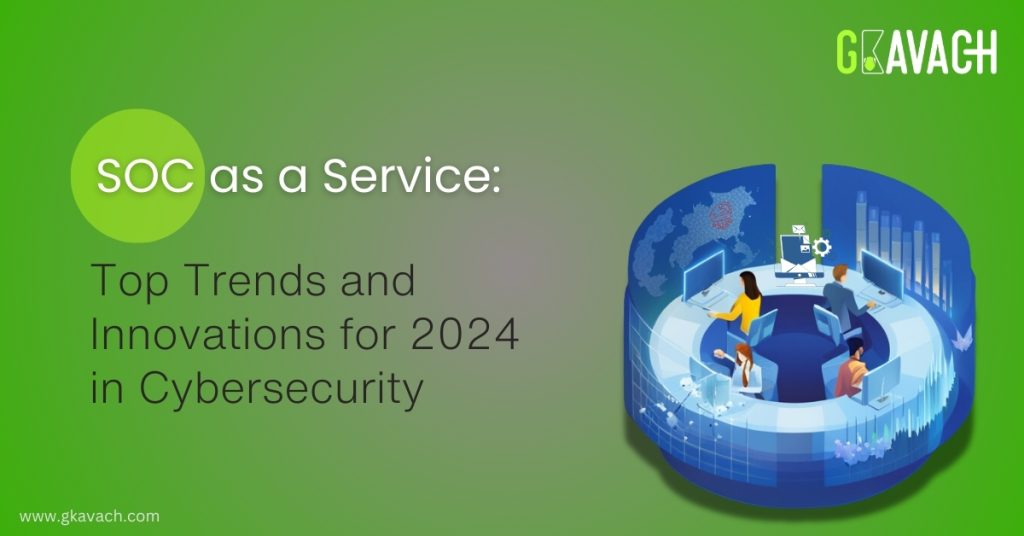
In an era where cyber threats are evolving rapidly, the need for strong security measures has never been more critical. Cybersecurity Ventures indicated that the digital landscape is witnessing a sharp rise in sophisticated cyberattacks, with ransomware incidents alone expected to cost businesses over $20 billion globally by the end of 2024. As organizations increasingly rely on interconnected systems and cloud-based solutions, the complexity and scale of potential vulnerabilities have grown significantly. This situation highlights the rising importance of Security Operations Center (SOC) as a Service – a game-changing solution that offers real-time monitoring, advanced threat detection, and rapid incident response. As we step into 2024, let’s explore the key trends and innovations that are making SOC as a Service an essential part of modern cybersecurity strategies for small and medium enterprises (SMEs).
AI and Machine Learning in SOC as a Service
One of the most significant trends in SOC as a Service is the integration of artificial intelligence (AI) and machine learning (ML). According to MarketsandMarkets, the AI in cybersecurity market is projected to grow from $8.8 billion in 2019 to $38.2 billion by 2026, at a compound annual growth rate (CAGR) of 23.3%. These technologies are transforming threat detection and response by enabling SOCs to analyze vast amounts of data in real-time, identify unusual patterns, and predict potential security breaches. AI-driven security solutions enhance the efficiency and accuracy of threat detection, allowing SMEs to respond quickly to emerging cyber threats.
The Rise of Cloud-Based SOCs
The shift towards cloud-based SOCs is another notable trend. Gartner predicts that by 2025, 85% of enterprises will have adopted a cloud-first principle. Cloud-based SOCs offer scalability, flexibility, and cost-effectiveness, making them an attractive option for businesses of all sizes, especially SMEs. These SOCs eliminate the need for significant upfront investments in hardware and software, allowing organizations to adapt their security infrastructure to changing needs quickly. The adoption of cloud-based SOCs also facilitates remote monitoring and management, which is crucial in today’s increasingly distributed work environments.
Automation and SOAR Platforms
Security Orchestration, Automation, and Response (SOAR) platforms are becoming integral to SOC as a Service. The SOAR market is projected to reach $2.3 billion by 2025, growing at a CAGR of 15.6%. SOAR tools automate routine security tasks, such as incident investigation and threat containment, reducing the time and effort required for manual processes. This automation not only improves response times but also minimizes the risk of human error, ensuring more reliable and effective threat mitigation. The integration of SOAR with SOC as a Service enhances the overall efficiency and effectiveness of security operations for SMEs.
Extended Detection and Response (XDR)
Extended Detection and Response (XDR) is gaining traction as a comprehensive approach to threat detection and response. XDR consolidates data from various sources, including networks, endpoints, and cloud environments, providing a complete view of an organization’s security posture. ESG Research indicates that 72% of organizations plan to increase their spending on XDR solutions in the next 12-18 months. This unified approach enables SOCs to detect and respond to threats more effectively, improving overall security resilience. The adoption of XDR within SOC as a Service is expected to continue growing, driven by the need for more integrated and proactive security solutions.
Addressing IoT Security Challenges
The rapid increase in Internet of Things (IoT) devices presents new security challenges that SOC as a Service must address. IoT devices often lack strong security measures, making them attractive targets for cyberattacks. Statista projects the number of IoT devices to reach 30.9 billion by 2025. SOC as a Service providers are increasingly focusing on securing IoT environments by implementing advanced threat detection and response capabilities tailored to the unique characteristics of IoT devices. This trend is critical as the number of connected devices continues to grow rapidly.
Enhanced Threat Intelligence and Collaboration
Effective threat intelligence sharing and collaboration are becoming essential components of SOC as a Service. By sharing information about potential threats and vulnerabilities, organizations can collectively enhance their security posture and respond more effectively to cyber threats. A report by Ponemon Institute reveals that organizations using threat intelligence effectively can reduce the cost of a data breach by an average of $2.8 million. SOC as a Service providers are leveraging advanced threat intelligence platforms to facilitate real-time data exchange and collaborative threat mitigation efforts, helping SMEs stay ahead of sophisticated cyber adversaries.
Compliance and Regulatory Adherence
As regulatory requirements around data privacy and cybersecurity become more strict, SOC as a Service providers are focusing on ensuring compliance with various industry standards and regulations. This includes implementing strong data protection measures, maintaining comprehensive audit trails, and ensuring timely response to data breaches. A survey by Deloitte shows that 70% of organizations believe compliance with data protection regulations is a top priority. By prioritizing compliance, SOC as a Service helps SMEs reduce legal and financial risks associated with non-compliance.
Conclusion
The future of SOC as a Service is marked by significant advancements in technology and a growing emphasis on proactive and integrated security measures. By embracing trends such as AI and machine learning, cloud-based SOCs, automation, XDR, IoT security, threat intelligence sharing, and regulatory compliance, SMEs can enhance their cybersecurity resilience and protect their digital assets more effectively. As the cybersecurity landscape continues to evolve, SOC as a Service will remain a vital component of comprehensive security strategies, helping businesses navigate the complexities of modern cyber threats.